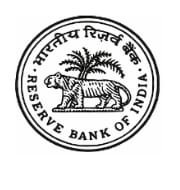RBI puts Dena Bank under prompt corrective action
Reserve Bank of India (RBI) has put state-run lender Dena Bank under prompt corrective action (PCA) framework. It has barred Dena Bank from extending fresh credit in view of deteriorating financial health due to mounting non-performing assets (NPAs) and mounting losses. It makes Dena Bank first lender to face curbs on lending under PCA framework.
Key Facts
This means Dena bank can disburse loans for credit facilities already sanctioned, but cannot sanction fresh loans. In addition, RBI also has barred from recruiting more staff. RBI may lift these restrictions in case the bank improves profitability and reduces the ratio of bad loans.
Background
In May 2017, RBI had placed Dena Bank under PCA framework, which had imposed restrictions including ban on dividend payments. Despite earlier restrictions, the financial health of Dena bank had not shown any signs of improvement, prompting the banking regulator to freeze fresh lending.
Dena bank’s loss had widened to Rs. 1,225.42 crore compared with previous year, when the loss was Rs. 575.26 crore. For financial year 2017-18, it had posted a net loss of ₹1,923.15 crore. This was third consecutive year bank has posted a net loss. Moreover, its gross NPAs as percentage of gross advances, was 22.4% as on end March 2018 as compared with 16.17% year earlier. In absolute terms, bad loans rose to Rs. 16,361.44 crore from Rs. 12,618.73 crore. The bank’s net NPAs were up to 11.95% or Rs. 7,838.78 crore from 10.66% or Rs. 7,735.12 crore.
Prompt Corrective Action (PCA) framework
PCA is process or mechanism to ensure that banks don’t go bust. Under it, RBI has put in place some trigger points to assess, monitor, control and take corrective actions on banks which are weak and troubled. It was first introduced after global economy incurred huge losses due to failure of financial institutions during 1980s-90s.
Parameters for placing under PCA framework are Capital ratios, Asset Quality and Profitability. Indicators to be tracked for these three parameters are CRAR (Capital to Risk weighted Assets Ratio)/Common Equity Tier I ratio, Net NPA (non-performing assets) ratio and Return on Assets (RoA) respectively. If banks breach of any risk threshold mentioned above, it results in invocation of PCA against them.
RBI enforces these guidelines to ensure banks do not go bust and follow prompt measures to put their house in order. It has tightened its PCA framework in April 2017 to turn around lenders with weak operational and financial metrics, Depending on the risk thresholds set in PCA rules, banks placed under it are restricted from expanding number of branches, staff recruitment and increasing size of their loan book. Other restrictions include higher provisions for bad loans and disbursal only to those companies whose borrowing is above investment grades.
Month: Current Affairs - May, 2018


